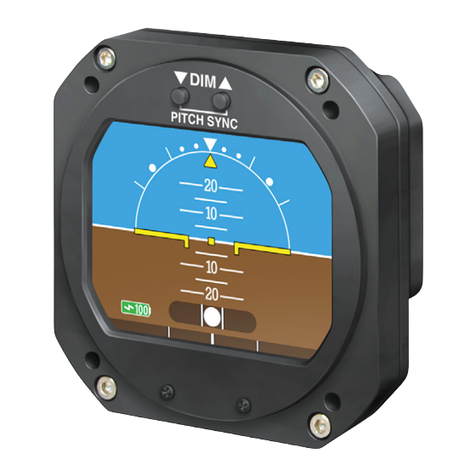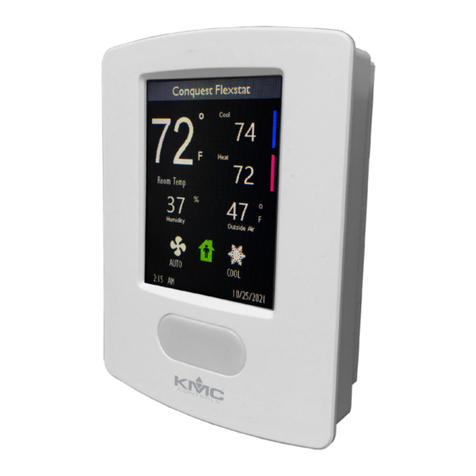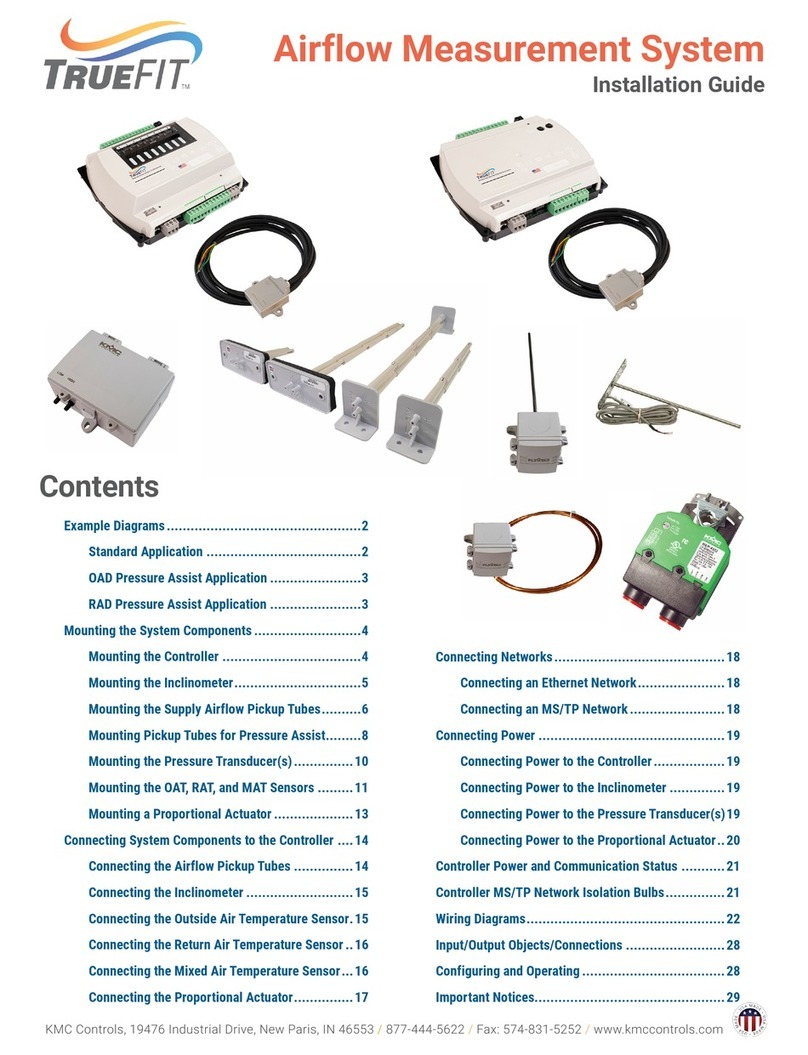
Page 2 of 6
KMC 2000-2 Operation Guide
Rev A
KELLY MANUFACTURING COMPANY
KMC
KMC Publication 1404
SECTION 1: INSTRUMENT DESCRIPTION
1.1 GENERAL DESCRIPTION
An attitude indicator, also known as a gyro horizon or articial horizon, is an instrument used in an aircraft to inform
the pilot of the orientation of the airplane relative to the earth. It indicates pitch (fore and aft tilt) and bank (side to
side tilt), and is a primary instrument for ight in instrument meteorological conditions. Attitude indicators also have
signicant applications under visual ight rules.
The KMC 2000-2 Digital Electronic Attitude Indicator receives digital information from a series of accelerometers
which is processed to actuate a display that has two dimensions of freedom, simultaneously displaying pitch and
bank. The display is colored to indicate the horizon as the division between the two colored segments (blue for sky
and black for ground), and is intended to be intuitive to use. The actual bank angle is calibrated around the circum-
ference of the instrument dial. The pitch angle is indicated by a series of calibration lines, each representing 5° or
10° of pitch.
On the attitude indicator you will see two yellow horizontal lines with a dot between them. The horizontal lines repre-
sent the wings and the dot represents the nose of the aircraft. If the symbolic airplane dot is above the horizon line
(more blue background) - the aircraft is nose up. If the symbolic airplane dot is below the horizon line (more black
background) - the aircraft is nose down. When the dot and wings are on the horizon line, you are in level ight. If the
lines representing the wings roll to the left or the right, the aircraft is probably starting a turn.
The magnetic direction indicator gives the pilot a general heading in relation to magnetic north. This is used as a
reference and does not indicate true geographical north. The pilot should be aware of the difference of magnetic
heading versus true heading in the area of operation in order to compensate as required.
The slip/skid indicator is a digital version of the traditional glass and ball inclinometer. The ball gives an indication
of whether the aircraft is slipping, skidding or in balanced ight. The ball’s movement is caused by the force of grav-
ity and the aircraft’s centripetal acceleration. When the ball is centered in the middle, the aircraft is in coordinated
ight. If the ball is on the inside (wing down side) of a turn, the aircraft is slipping. And nally, when the ball is on the
outside (wing up side) of the turn, the aircraft is skidding.
1.2 PHYSICAL DESCRIPTION
The KMC 2000-2 is a direct reading attitude indicating instrument which provides a real-time visual display of
aircraft pitch and roll in reference to the horizon. The instrument utilizes a series of accelerometers and complex
mathematical formulas to determine pitch and roll. The attitude indicator is not required to conform to FAA TSO
certication with light sport aircraft.
The instrument also has an integrated magnetic direction indicator to comply with the ASTM required equipment for
night ight in a Light Sport Aircraft. An additional digital slip/skid indicator is also displayed. Refer to table 1 below
for leading particulars.
ACCURACY ...................................................................................................................... 1º MAXIMUM IN ROLL AND PITCH
OPERATING TEMPERATURE RANGE .............................................................................................................-30º TO +50º C
EYE VIEWING ANGLE ENVELOPE ....................................................................Horizontal Left and Right: 35° Left, 35° Right
Vertical Up and Down: 35° Up, 35° Down
Minimum distance from display surface: 6 inches
Maximum distance from display surface: 48 inches
FAA /EASA SPECIFICATION CONFORMANCE .............................................................................................................NONE
Table 1.1, Leading Particulars





























